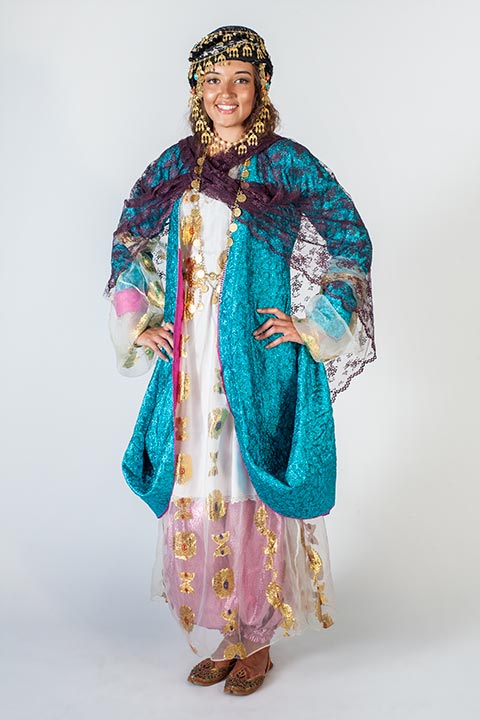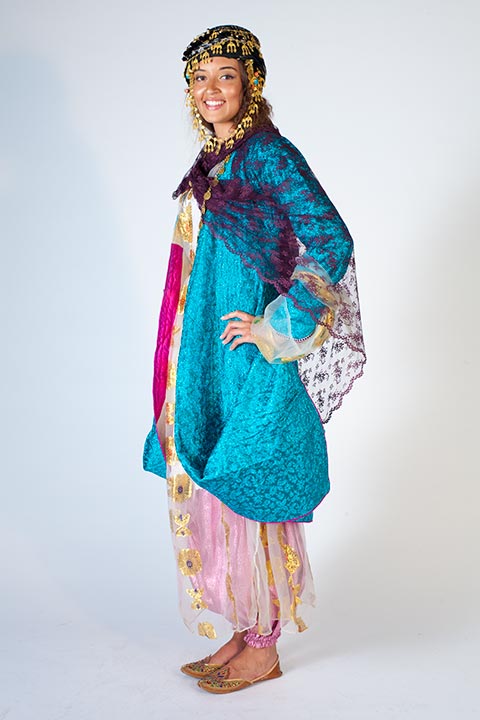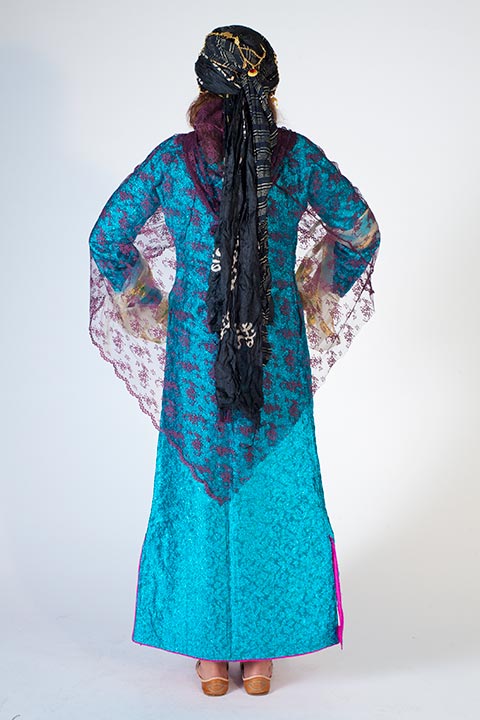Suleymania region
From the collection of Della Murad.
These clothes were worn by Della’s mother Massoma Mohammad Ahmed.
Fashionable in the 50s. The outfit is composed of several layers.
Baggy trousers (Awal-krass) are worn under the dress (Krass). The trousers are made from any thick fabric, printed or plain. The Awal-krass shown here is made from a pink, plain shiny fabric called Surma. A thin slip (Jear-krass) made of cotton is worn over the baggy trousers. It is usually black or white. The dress (krass) shown here was made in 1954 and was made from white chiffon with gold patterns. The sleeves are long with a triangle shape.
Note: this dress shows the shift in the early 50s to the use of more transparent fabrics in dresses.
The coat (Kawa) is made from a fabric called Gurun. This long coat is padded with cotton and would be worn in winter. The corners of the coat would be lifted and placed in the pockets when the wearer was doing domestic work – both for ease of movement and to protect the garment.
The shawl (Dassmal) is usually made from net and is hand embroidered. The middle of the shawl at the back is attached to a hat.
The hat (Fessa) was decorated with coins and fringing (called Gulang or Qazzaz). This would be attached to different fabrics (such as Sarkayi or an embroidered net fabric) and would be wrapped around the face until secure. The headpiece is then tied at the back with long strings.
On each side of the hat are Lagera – two gold strands made from coins, semi precious stones and coral (see two designs in jewellery section). The front of the hat and below the chin are decorated with pieces called Sar-parcham, thin gold strands with gold flowers attached (see jewellery section). The necklace is called Milla-Lira. It is gold and decorated with 21 Ottoman Lira (coins). The one shown here has 20 one lira coins with a larger five lira coin in the middle. The five lira coin is sometimes substituted for a 2.5 lira coin. (see jewellery section)
Location Description
Mountainous region, Kurdish dialect spoken is Sorani. Both areas are famous for beautiful landscapes. Halabja is famous for growing pomegranates.





